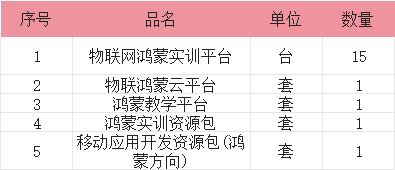在C++中,链表是一种常见的数据结构。插入排序和删除重复节点是链表操作中较为基础的两个任务。下面分别介绍如何实现这两种操作。
链表节点定义
首先,我们定义链表节点结构:
struct ListNode {
int val;
ListNode* next;
ListNode(int x) : val(x), next(nullptr) {}
};
插入排序
插入排序是通过逐一比较元素并将其插入到正确位置来排序链表。实现步骤如下:
- 创建一个哑节点
dummy,它的下一个节点指向链表头部。 - 遍历链表,将每个节点插入到正确位置。
以下是插入排序的实现代码:
ListNode* insertionSortList(ListNode* head) {
if (!head) return nullptr;
ListNode* dummy = new ListNode(0);
dummy->next = head;
ListNode* curr = head;
ListNode* prev = dummy;
ListNode* next = nullptr;
while (curr) {
if (curr->next && curr->next->val < curr->val) {
// Find the position to insert the next node
next = curr->next;
curr->next = next->next;
prev = dummy;
// Locate the insertion point
while (prev->next && prev->next->val < next->val) {
prev = prev->next;
}
// Insert the node
next->next = prev->next;
prev->next = next;
} else {
curr = curr->next;
}
}
ListNode* sorted_head = dummy->next;
delete dummy;
return sorted_head;
}
删除重复节点
删除链表中的重复节点可以分为两种情况:删除所有重复的节点(只保留唯一出现的节点)和只删除重复出现的多余节点(保留一个)。
1. 删除所有重复的节点
ListNode* deleteDuplicatesAll(ListNode* head) {
if (!head) return nullptr;
ListNode* dummy = new ListNode(0);
dummy->next = head;
ListNode* prev = dummy;
while (head) {
bool duplicate = false;
while (head->next && head->val == head->next->val) {
duplicate = true;
head = head->next;
}
if (duplicate) {
head = head->next;
continue;
}
prev->next = head;
prev = head;
head = head->next;
}
prev->next = nullptr; // Ensure the last node points to nullptr
ListNode* unique_head = dummy->next;
delete dummy;
return unique_head;
}
2. 删除重复出现的多余节点(保留一个)
ListNode* deleteDuplicates(ListNode* head) {
if (!head) return nullptr;
ListNode* curr = head;
while (curr && curr->next) {
if (curr->val == curr->next->val) {
ListNode* temp = curr->next;
curr->next = curr->next->next;
delete temp; // Free memory
} else {
curr = curr->next;
}
}
return head;
}
测试代码
以下是一些简单的测试代码:
void printList(ListNode* head) {
while (head) {
std::cout << head->val << " -> ";
head = head->next;
}
std::cout << "nullptr" << std::endl;
}
int main() {
// Create a sample linked list: 4 -> 3 -> 3 -> 2 -> 1 -> nullptr
ListNode* head = new ListNode(4);
head->next = new ListNode(3);
head->next->next = new ListNode(3);
head->next->next->next = new ListNode(2);
head->next->next->next->next = new ListNode(1);
std::cout << "Original list:" << std::endl;
printList(head);
// Perform insertion sort
head = insertionSortList(head);
std::cout << "Sorted list:" << std::endl;
printList(head);
// Delete duplicates, keeping only unique elements
head = deleteDuplicatesAll(head);
std::cout << "List after deleting all duplicates:" << std::endl;
printList(head);
// Create another sample linked list: 1 -> 1 -> 2 -> 3 -> 3 -> nullptr
head = new ListNode(1);
head->next = new ListNode(1);
head->next->next = new ListNode(2);
head->next->next->next = new ListNode(3);
head->next->next->next->next = new ListNode(3);
std::cout << "Another list with duplicates:" << std::endl;
printList(head);
// Delete duplicates, keeping one instance
head = deleteDuplicates(head);
std::cout << "List after deleting duplicates (keeping one):" << std::endl;
printList(head);
return 0;
}
这些代码段展示了如何使用插入排序对链表进行排序,以及如何删除链表中的重复节点。可以根据需要对其进行修改和扩展。






